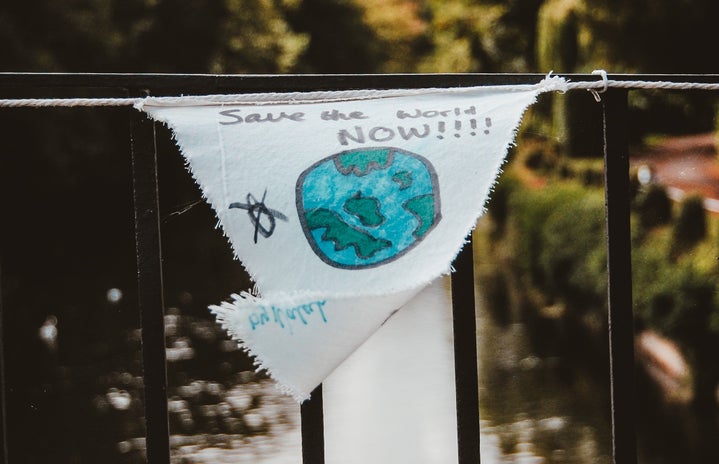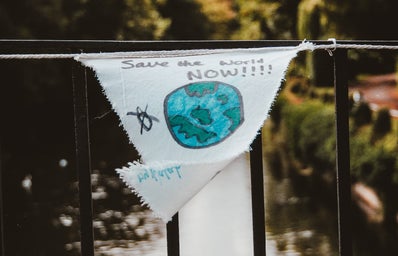Disclaimer: This article is based on what I have been learning about the New B.C Curriculum through my education courses. I am not an expert, as I am a second-year elementary education student.
Many teachers, parents and students are wary and critical of the new curriculum. Many teachers are resistant to the wave of radical change in the B.C. education system. They’ve been teaching the same lessons and using the same behavioral management strategies for twenty plus years. Why would they change? It’s worked for this long! But has it?
After watching my friends struggle through the public-school system with special needs, and observing students with special needs (usually one-quarter of the class) get neglected and dismissed by teachers, I would beg to differ.
Teaching all students the same way and giving them all the same worksheets is ridiculous and—excuse my French—lazy and meaningless. If we used the same medical techniques, science experiments or therapies for over thirty years, people would surely speak out. In every other profession, we learn, adapt and grow in every moment. Why not with teaching?
I’m sorry if you are a teacher reading this and I have offended you. I know teachers work incredibly hard and have a deep sense of empathy for their students, but I will invite you to consider the possibility that the way you are going about “helping” vulnerable students may actually be harmful in some cases.
So, what is the New B.C. Curriculum? It’s my favourite topic! If you’re reading this as an 18+ UVic student from B.C., guess what? The public education system is enduring a major shift and the system you were part of is not similar—not even close.
Gone is the age of giving each child the same worksheets. Gone is the era of desks in rows (a practice that was started during the Industrial Revolution—it’s time for a change!). Gone is the time of dismissing students’ social and emotional needs, as if it’s not the teacher’s job to support them.
Essentially, the New B.C. Curriculum focuses on the emotional, social and academic needs of students, leading them towards self-directed, inquiry-based learning. Inquiry-based learning is bringing the questions and passions of individual children into the subjects they are learning. No two children’s learning will ever look quite the same again.
Yes, there is still a set curriculum, but if you examine the big ideas and curricular competencies, you will notice that they are incredibly broad and open to interpretation and student inquiry. For example, if the teacher is conducting a unit on the ocean, maybe Jill loves whales and wishes to pursue an inquiry project on whales, whereas Jimmy loves tiger sharks and Barbara adores seahorses. Furthermore, progressive teachers guide students in year-long passion projects: they pursue whichever subject they love and research it all year, developing a rich, in-depth project that is meaningful to them.
You may be thinking, “Wow, that sounds like an insane amount of work.” Yes, teaching is hard! My literacy professor says almost every class without fail, “Teaching is harder than it used to be!”, as if reminding us of the seemingly impossible task we’ve all signed up for. The increased difficulty is because we are trying to support the whole child instead of attempting to control behaviour and force students to focus solely on their academics.
The job of a teacher is to guide, support and provide empathy to the child. Our challenge: every single child in any given class is incredibly diverse. Alan Mclean says, “A good teacher must be a dancer.” A good teacher must try and move to the rhythm of the child, understanding each child’s unique needs and supporting them accordingly. A teacher is significantly outnumbered, so this is no easy task.
How can we help all of our students feel that they have their psychological needs met, so they can be successful inside and outside the classroom? The following is the Coles notes version of the most valuable things I’ve learned from my courses and my experiences observing classrooms this year.
The Most Important Things I’ve Learned About Teaching
1. Build a safe classroom community
This is no easy feat, but it can be done successfully. I visited a classroom that held a community circle every morning. They were grade one and held this circle to discuss their emotions and issues that had arisen the previous day.
Each child knew to be respectful of each other in the discussion and knew to keep everything confidential. For example, a boy in the class the previous day had said he wished one girl had never been born. The teacher gracefully explained that everyone is born for a reason and everyone comes into the world with great value. She read them a book about each baby being unique and lovely, followed by each child stating what value they bring to the classroom and to the world.
She didn’t condemn the child who made this statement. Rather, she said that he wasn’t being mindful in the moment, then had him apologize privately and forgave his misconduct. I was blown away by her mindfulness and conflict resolution skills—that’s the kind of teacher I want to be! I was thrilled to be a part of it.
Building a safe classroom community can come in many forms: community circles, discussing emotions, team building activities, etc. It is vital to establish a safe and welcoming community, so all students have the opportunity to thrive.
2. Try to understand each students’ unique needs and support them accordingly
This is by far the hardest task a teacher faces throughout their career. Each student comes to the classroom with a unique set of needs, and they will withdraw or act out if these needs aren’t being met.
It’s up to the teacher to decide how to support their students, but we don’t have to do it alone! Schools have an array of resources to support teachers: counsellors, educational psychologists, special education teachers, other teachers, the principal, education assistants, and more. Sometimes finding out what works for each child takes a little bit of trial and error. It’s hard work, but it’s also amazing, necessary work that can change a child’s entire world.
3. Create a warm and safe physical classroom environment
I’d never even considered this aspect until one week ago! My literacy professor explained that your typical, busy and colourful classroom can be quite overstimulating to some students. It’s much more authentic if the children’s growth over the course of the school year is documented on neutral, calming walls.
It’s better to have limited commercialized posters and instead have the students create their own posters for the alphabet and for math, so it’s meaningful to them. There should also be a space in the classroom for mindfulness, equipped with sparkly snow globes, breathing exercises, yoga mats, and children’s books. Different types of seating (i.e., exercise balls, standing desks, couches, bean bag chairs) are essential for learning—this is the students’ space, so it should reflect who they are!
Finally, never use blaring, horrible fluorescent lights. My literacy professor says she always used dim lamps throughout her teaching career to prevent headaches and sore eyes. All of these factors build a calming classroom environment, thus creating a safe space for learning.
4. Guide student inquiry and lead them toward self-directed learning
Once the above is taken care of, teachers can begin to slowly push students toward inquiry and self-directed learning. It can’t happen all at once because that triggers anxiety within children—teachers shouldn’t throw them into the deep end! Rather, teachers should guide students toward self-directed learning by asking them what their passions are and giving them time to work on their inquiry-based projects throughout the year.
There are many other factors to consider other than building a safe community, understanding the unique needs of students, creating a safe physical classroom environment, and guiding student inquiry. Moreover, these are all difficult feats. They take time, patience, empathy, and a passion for education.
What do I know, though? I’ve never done this before! I’ll make tons of mistakes throughout my teaching career and I’m okay with that. I’ll simply dust myself off, try again, and grow from my mistakes.
If you’re a teacher trying to support everyone, remember the most important aspect: take care of yourself by relaxing with things like yoga, creative endeavours, and spending time with loved ones. Good luck!

